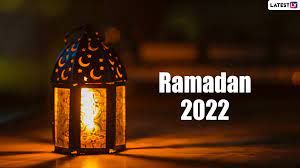
Welcome to London Bridge Class
Class Teacher: Miss S. Winser (Howard’s Curriculum Lead)
Teaching Assistant: Mrs R. Verma
Homework:
Handed out on Fridays,
Returned by Wednesday,
Please remember that homework is an important building stone in the child’s learning and development. The children will receive Dojo-Points for completed homework as well as particularly outstanding contributions.
Daily Reading:
To help further develop the children’s reading and academic development, please support and encourage the children to read daily for at least 10 minutes. This daily reading should then be recorded (title + pages) in the Learning Diary. We would kindly ask parents to sign/initial the record.
The children will receive Dojo-Points for daily reading.
Recommended reading books for Year 5:
Best Books for Year 5 | Ages 9-10 | BooksForTopics
Expertly selected books for 9 and 10 year old children (lovereading4kids.co.uk)
Reading Activities:
Once the children have completed reading a book, they then choose an activity related to the book (e.g. book-review, letter to the author, sequel, character profile, alternative cover etc.). This activity is completed in the child’s Reading Journal. Our wonderful teaching assistants will then check, feedback and record the completion of these activities.
The children will receive multiple Dojo-Points to reward exceptional work.
PE:
Our current P.E. days are Tuesday and Wednesday with Miss Handley.
Spring 2 – Week 7 – 4th April 2022
Welcome to our last school week this term.


Here are the objectives for the week ahead.
PE days are still Tuesday and Thursday.
[dropshadowbox align=”none” effect=”lifted-both” width=”auto” height=”” background_color=”#e2f3f9″ border_width=”1″ border_color=”#2715d0″ ]Mathematics[/dropshadowbox]
- To explain the relation between finding a fraction of a quantity and multiplying a whole number by a unit fraction.
- To explain the relation between dividing a whole number and multiplying a whole number by a unit fraction.
- To use my knowledge of multiplying a whole number by a unit fraction to solve problems.
- To find a non-unit fraction of a quantity (mental calculation).
- To find a non-unit fraction of a quantity (formal calculation).
[dropshadowbox align=”none” effect=”lifted-both” width=”auto” height=”” background_color=”#e99bcc” border_width=”1″ border_color=”#221a6f” ]English[/dropshadowbox]
- To engage in book talk.
- To identify the features of a non-chronological report.
- To plan a non-chronological report.
- To write a non-chronological report.
- To edit a non-chronological report.
[dropshadowbox align=”none” effect=”lifted-both” width=”auto” height=”” background_color=”#d34222″ border_width=”2″ border_color=”#25631c” ]Spanish[/dropshadowbox]
- To actively use vocabulary needed in a café/restaurant (role-play).
[dropshadowbox align=”none” effect=”lifted-both” width=”auto” height=”” background_color=”#b7e9fc” border_width=”1″ border_color=”#d56161″ ]Science[/dropshadowbox]
- To be able to classify materials based on their ability to conduct electricity (investigation).
[dropshadowbox align=”none” effect=”lifted-both” width=”auto” height=”” background_color=”#f98888″ border_width=”2″ border_color=”#0c9d51″ ]RHE[/dropshadowbox]
- To know what to do in an emergency.
- To reflect on self image.
[dropshadowbox align=”none” effect=”lifted-both” width=”auto” height=”” background_color=”#d7a8e3″ border_width=”2″ border_color=”#803e3e” ]RE[/dropshadowbox]
- To understand the Easter story.
- To reflect on the representations of the Easter story through Art.
- To create my own art inspired by the Easter story.
Enjoy your Sunday evening.
Your Year 5 Team.
Spring 2 – Week 6 – 28th March 2022
Welcome to the last Geography week of this term.

Here are the objectives for the week ahead.
PE days are still Tuesday and Thursday.
[dropshadowbox align=”none” effect=”lifted-both” width=”auto” height=”” background_color=”#e2f3f9″ border_width=”1″ border_color=”#2715d0″ ]Mathematics[/dropshadowbox]
- To explain the relation between repeated addition of proper fractions and multiplication of fractions.
- To multiply a proper fraction by a whole number (< 1).
- To multiply a proper fraction by a whole number (> 1).
- To multiply a mixed number (fraction) by a whole number.
- To find a unit fraction of a quantity.
[dropshadowbox align=”none” effect=”lifted-both” width=”auto” height=”” background_color=”#e99bcc” border_width=”1″ border_color=”#221a6f” ]English[/dropshadowbox]
- To understand how to use brackets in writing.
- To engage in book talk.
- To read for performance.
- To develop comprehension skills.
- To write for purpose (short writing).
[dropshadowbox align=”none” effect=”lifted-both” width=”auto” height=”” background_color=”#d34222″ border_width=”2″ border_color=”#25631c” ]Spanish[/dropshadowbox]
-
To use vocabulary needed in a café/restaurant.
[dropshadowbox align=”none” effect=”lifted-both” width=”auto” height=”” background_color=”#b7e9fc” border_width=”1″ border_color=”#d56161″ ]Science[/dropshadowbox]
- To use fair tests and observations to explore how well a range of materials dissolve.
[dropshadowbox align=”none” effect=”lifted-both” width=”auto” height=”” background_color=”#f98888″ border_width=”2″ border_color=”#0c9d51″ ]RHE[/dropshadowbox]
- To know what to do in an emergency. (Recap and practise)
[dropshadowbox align=”none” effect=”lifted-both” width=”auto” height=”” background_color=”#d7a8e3″ border_width=”2″ border_color=”#803e3e” ]Geography[/dropshadowbox]
- To explain the links between Global warming and major events (e.g. droughts) -Case-study Sahel
- To explain the links between Global warming and major events (e.g. droughts, extreme weather, farming) – Case-study Europe
- To explain the effects of initiatives to tackle Global warming. case-study Scandinavia.
- To understand interconnectivity in its links with fairness and unfairness (resource distribution).
Enjoy your last March Sunday this year.
Your Year 5 Team.
